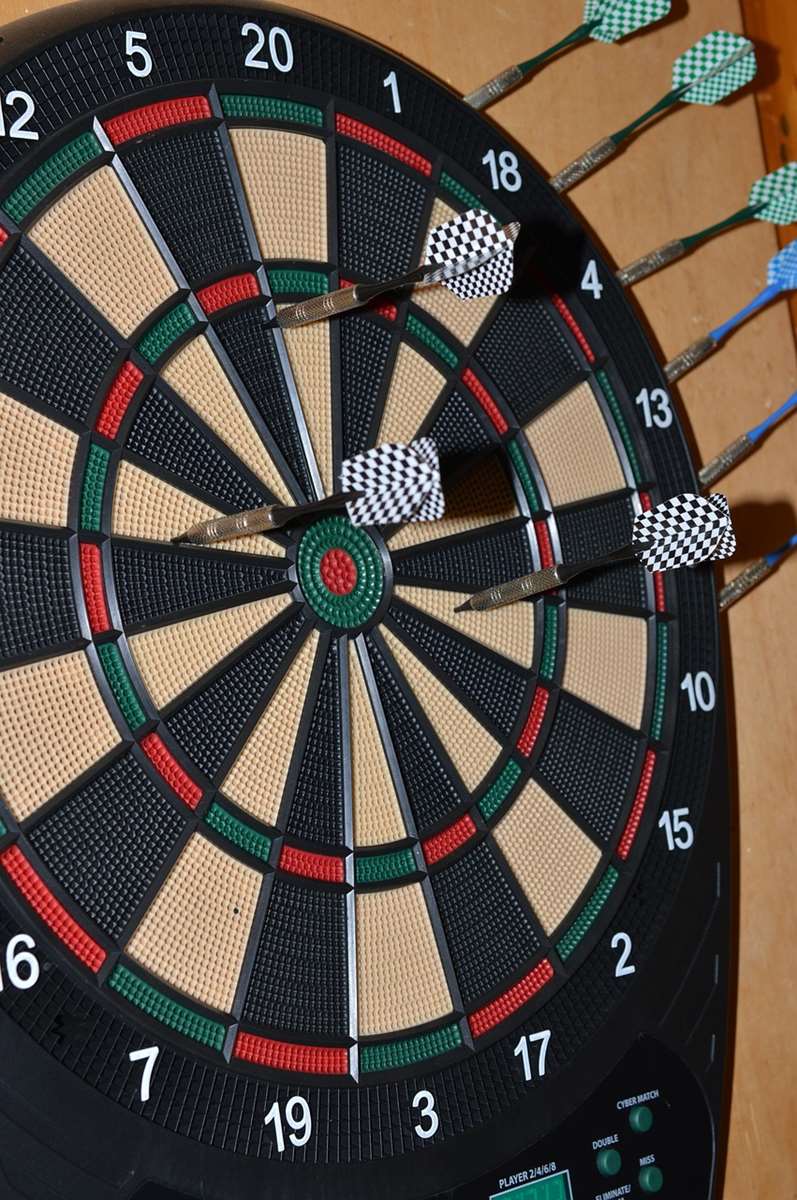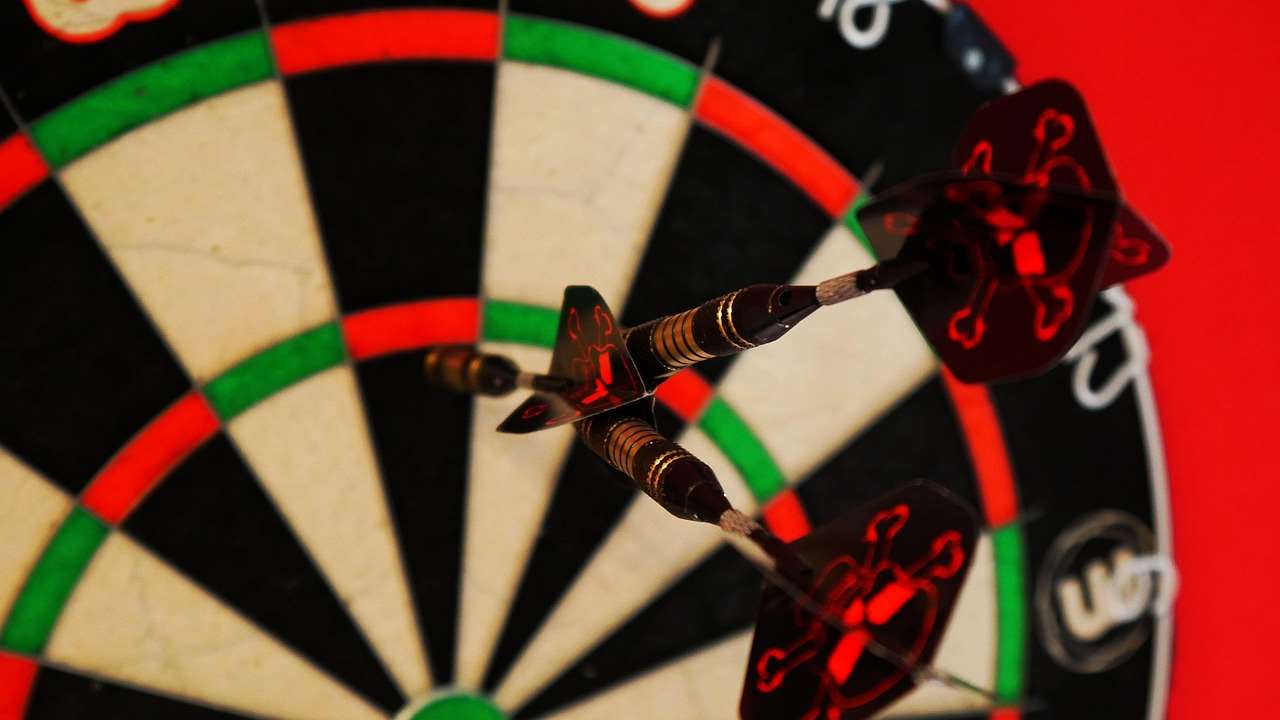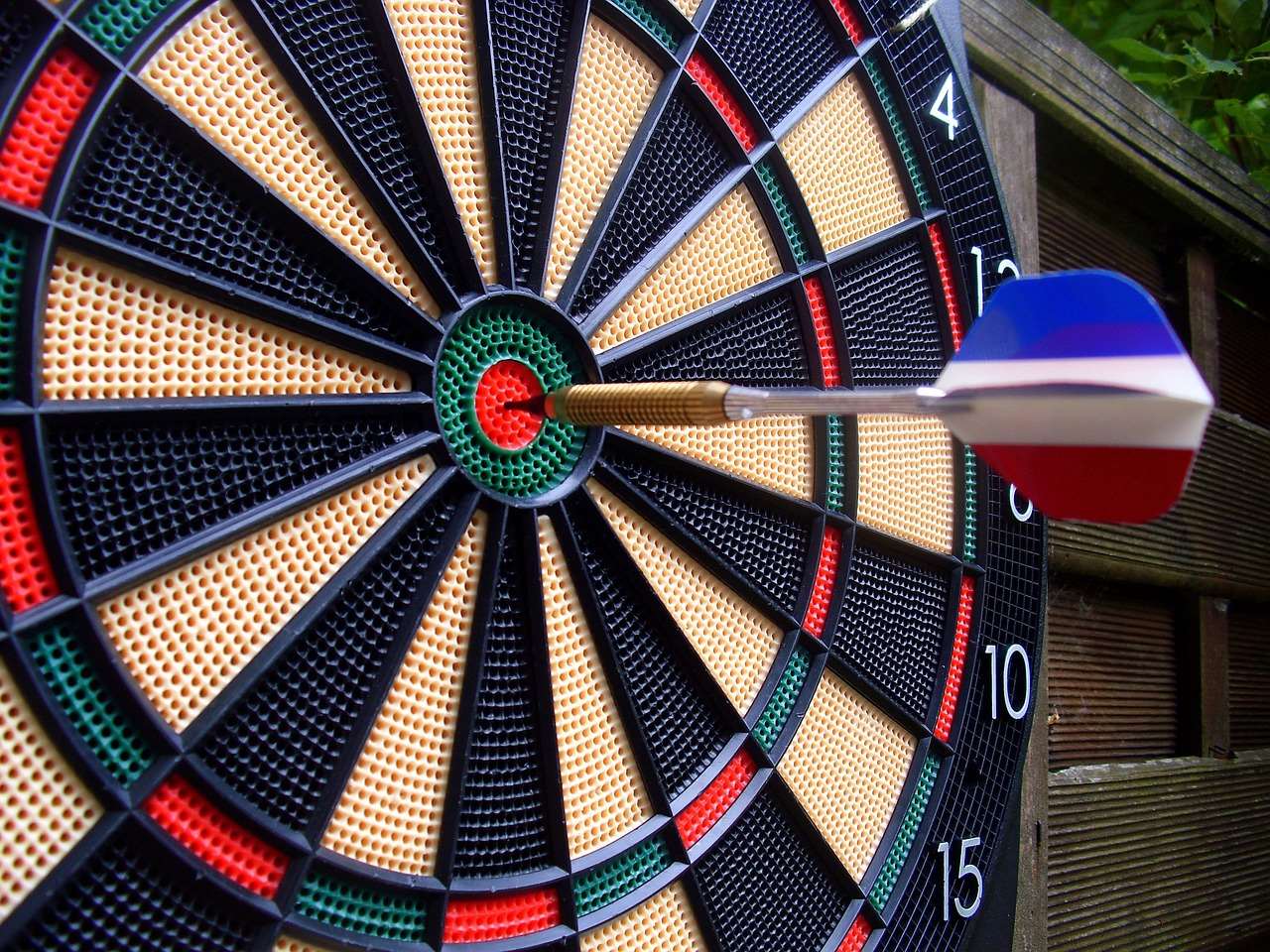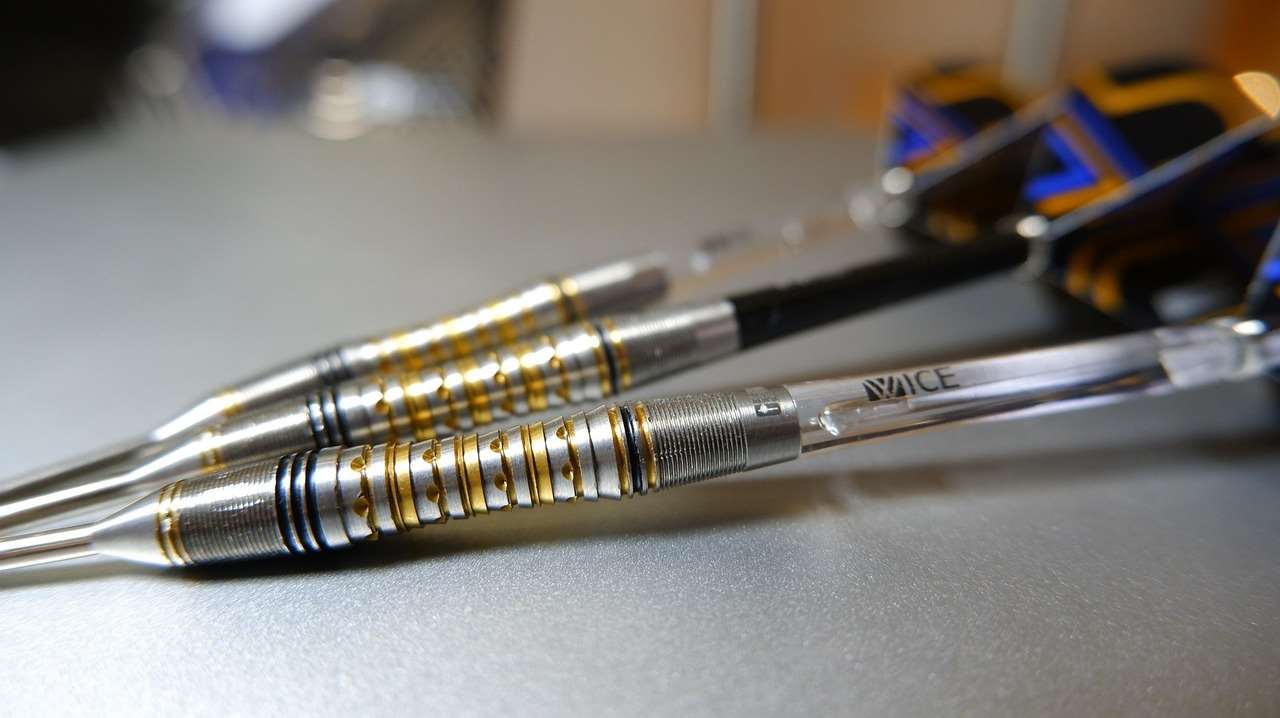Understanding and **testing dart weight distribution** is crucial for achieving consistency and accuracy in your throws; optimizing this balance significantly impacts your dart’s flight. This article will guide you through methods to assess and adjust your dart’s weight, helping you find the perfect setup for your throwing style and skill level, and covers related aspects like **dart balance points** and the importance of **dart grip**.
⚠️ Still Using Pen & Paper (Of een schoolbord)?! ⚠️
Stap in de toekomst! De Dart Teller -app behandelt alle scoren, stelt kassa voor, en volgt uw statistieken automatisch. It's easier than you think!
Probeer de Smart Dart Teller -app gratis!Klaar voor een upgrade? Klik hierboven!
The Importance of Testing Dart Weight Distribution
The way a dart is weighted dramatically affects its trajectory and how it feels in your hand. Whether you prefer a front-loaded, center-balanced, or rear-weighted dart is highly personal, but understanding how these variations influence your throw is fundamental. **Testing dart weight distribution** allows you to experiment and discover which configuration best complements your natural throwing motion. Different **dart barrel shapes** also play a role.

A dart that is improperly weighted can lead to inconsistent throws, wobble in flight, and a general lack of control. By carefully evaluating and adjusting the weight distribution, you can significantly improve your accuracy and overall performance. This involves more than just the **overall weight**; it’s about *where* that weight is located.
Understanding Dart Weight Bias
Before delving into **testing dart weight distribution**, it’s essential to understand the different weight biases and their effects:
- Front-Weighted Darts: These darts tend to fly straighter and penetrate the board more easily. They are often preferred by players who have a smooth, controlled throwing motion.
- Center-Balanced Darts: Offer a more neutral feel and are generally considered versatile. Suitable for a wide range of throwing styles.
- Rear-Weighted Darts: Can be more forgiving of slight errors in release and may be preferred by players who have a more flick-like throwing motion.
Methods for Testing Dart Weight Distribution
There are several methods you can use to evaluate and adjust the weight distribution of your darts. Start by understanding the impact of different **dart point types** on balance.
The Balance Point Test
A simple yet effective method is the balance point test. Here’s how to perform it:
- Find the Balance Point: Rest the dart on your finger, close to the center of the barrel.
- Observe the Tilt: Note whether the dart tilts forward (front-weighted), stays relatively level (center-balanced), or tilts backward (rear-weighted).
- Adjust (If Possible): Many darts allow you to change components like points and stems, influencing the balance. Experiment!
While subjective, this provides a baseline understanding. Pay attention to how the dart feels in your hand. Are you comfortable with the current **dart shaft lengths**?
Using a Precision Scale
For a more precise assessment, use a digital scale that measures in small increments (Bijv., 0.1 grams). While you can’t directly measure the *distribution*, you can weigh different components (points, barrels, stems, flights) to understand how they contribute to the overall balance. Swapping out these components is a core part of **testing dart weight distribution**.

Consider purchasing aftermarket components to fine-tune your darts. Experimenting with heavier or lighter dart points, for example, is a quick and easy way to adjust the center of gravity. The key is to incrementally adjust and test your throws after each change.
It’s worth noting that a variance in component weight can happen, even within the same set. Check the weight of each barrel, stem and flight to ensure you have a well-balanced set of darts. Understanding the different aspects of **dart grip techniques** may help to identify why a slight weight imbalance affects your throw.
Flight Performance Analysis
Uiteindelijk, the most important test is how the dart performs in flight. Throw your darts repeatedly, focusing on consistency and accuracy. Observe the following:
- Trajectory: Does the dart fly straight, or does it wobble?
- Penetration: Does the dart stick firmly in the board, or does it bounce out frequently?
- Grouping: Are your darts landing close together?
Analyzing these aspects will provide valuable feedback on whether the current weight distribution suits your throwing style. Adjustments may involve changing your **dart throwing stance** to see if that improves grouping.
Factors Influencing Dart Weight Distribution
Several factors can influence the effective weight distribution of your darts:
- Barrel Material: Tungsten barrels are denser than brass barrels, allowing for slimmer designs with concentrated weight.
- Barrel Shape: Different barrel shapes (Bijv., torpedo, straight, bomb) naturally shift the weight bias.
- Point Length and Material: Longer or heavier points shift the weight forward.
- Stem Length and Material: Longer stems can influence stability, while heavier stems can shift the balance slightly rearward.
- Flight Shape and Size: While flights primarily affect aerodynamics, larger flights can subtly influence the overall feel.
Careful consideration of these factors is essential for achieving optimal **dart weight distribution**. Experiment with different setups until you find what works best for you. Check out Kies de beste Dart -apparatuur for help choosing the best components to experiment with.

Adjusting Dart Weight Distribution: Practical Tips
Here are some practical tips for adjusting your dart’s weight distribution:
- Experiment with Points: Try different point lengths and materials (Bijv., steel, conversion points for soft-tip boards). Longer or heavier points will shift the weight forward.
- Change Stems: Shorter stems can make a dart feel more front-weighted, while longer stems can make it feel more rear-weighted. Different materials (Bijv., nylon, aluminum) also affect weight.
- Vary Flights: Experiment with different flight shapes and sizes to fine-tune the dart’s stability and trajectory. While their impact on weight *distribution* is minimal, they can affect the *feel* of the dart.
- Use Weight Additions: Specialized products like stem weights or point weights can be used to add small amounts of weight to specific areas of the dart.
Remember to make small, incremental adjustments and test your throws after each change. It’s a process of trial and error. Also, bear in mind how your **dartboard setup** could affect the results of your testing.
Common Mistakes When Testing Dart Weight Distribution
Avoid these common pitfalls when **testing dart weight distribution**:
- Making Drastic Changes: Change only one variable at a time to accurately assess its impact.
- Ignoring Feel: Don’t rely solely on measurements. Pay attention to how the dart *feels* in your hand and during your throw.
- Not Throwing Enough: Throw a sufficient number of darts (at least 20-30) after each adjustment to get a reliable assessment.
- Being Impatient: Finding the perfect weight distribution takes time and experimentation. Be patient and persistent.

Consider how the environment you are throwing in could also be impacting your throws. Check out this Optimal Dartboard Lighting Solutions Guide to see if improvements can be made to your set up.
Advanced Techniques for Optimizing Dart Balance
For serious players looking to fine-tune their darts even further, consider these advanced techniques:
- Custom Barrel Modification: Some players have their barrels custom-modified by professional dart makers to achieve a specific weight distribution. This is an expensive but effective option.
- Micro-Adjustments with Lead Tape: For subtle adjustments, you can carefully apply small pieces of lead tape to the barrel. This allows for very precise weight adjustments.
- Professional Fitting: Consider consulting with a professional dart fitter who can analyze your throwing style and recommend specific dart configurations.
These advanced techniques may not be necessary for casual players, but they can provide a competitive edge for serious dart enthusiasts. Remember to prioritise safety when using tools like lead tape. This material can be harmful if swallowed or exposed to broken skin.

Conclusie
**Testing dart weight distribution** is a critical aspect of improving your dart game. By understanding the different weight biases, using appropriate **testing methods**, and carefully adjusting your darts, you can find the perfect setup for your throwing style and skill level. Remember to focus on consistency, nauwkeurigheid, and feel. Experiment with different components, and don’t be afraid to try new things. The journey to finding the perfect dart is a personal one, but the rewards are well worth the effort. With practice and experimentation, you’ll be hitting those bullseyes with greater consistency and confidence.
Take the time to understand your throwing style and how it interacts with different dart setups. Fine-tuning your darts for optimum balance will have a great effect, however, the perfect dart won’t throw itself, and you still need to practice! Ready to take your dart game to the next level? Start experimenting with different dart components today and discover the perfect weight distribution for your throw!
Hoi, Ik ben Dieter, En ik heb Dartcounter gemaakt (Dartcounterapp.com). Mijn motivatie was geen darts -expert - helemaal tegenovergestelde! Toen ik voor het eerst begon te spelen, Ik hield van het spel, maar vond het moeilijk en afleidend om nauwkeurige scores te houden en statistieken te volgen.
Ik dacht dat ik niet de enige kon zijn die hiermee worstelde. Dus, Ik besloot om een oplossing te bouwen: een eenvoudig te gebruiken applicatie die iedereen, Ongeacht hun ervaringsniveau, zou kunnen gebruiken om moeiteloos te scoren.
Mijn doel voor Dartcounter was eenvoudig: Laat de app de nummers afhandelen - het scoren, de gemiddelden, de statistieken, Zelfs checkout suggesties - zodat spelers puur kunnen richten op hun worp en genieten van het spel. Het begon als een manier om het probleem van mijn eigen beginners op te lossen, En ik ben heel blij dat het is uitgegroeid tot een nuttig hulpmiddel voor de bredere darts -community.